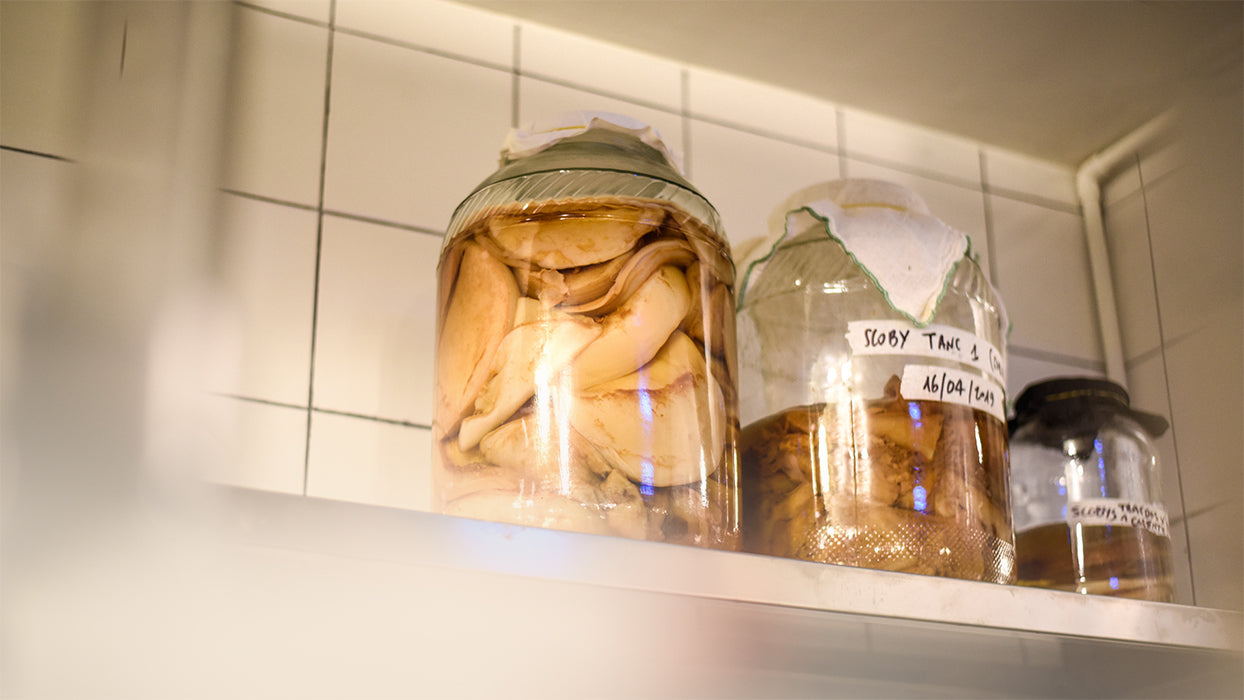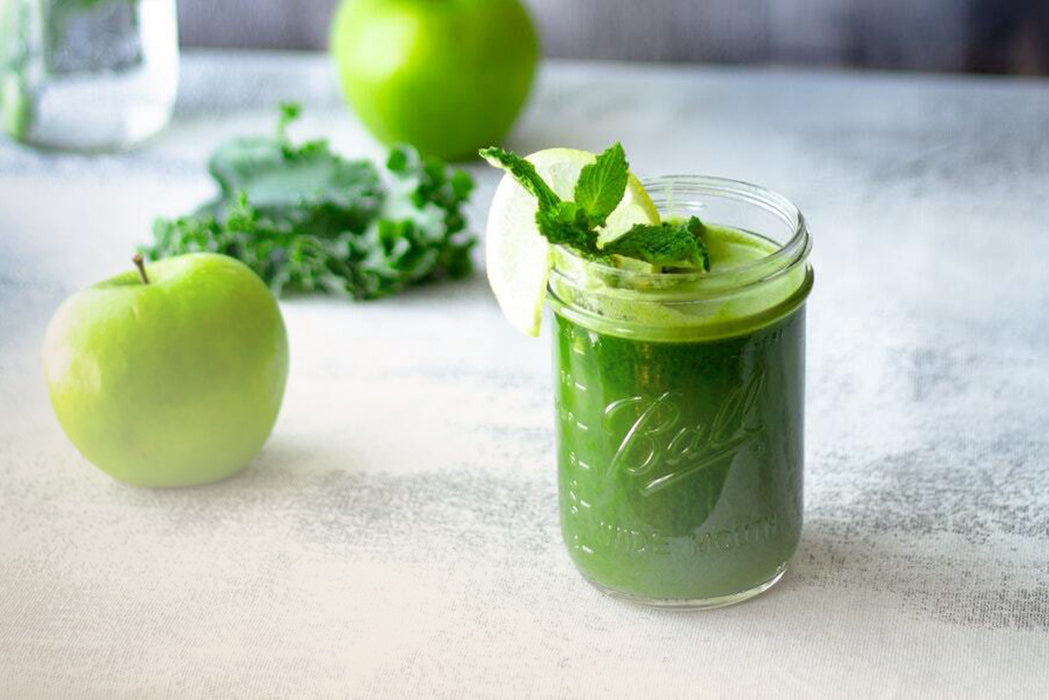Short fermentation break for your tea fungus
Want to take a short break from making your own kombucha or store your scoby as a backup? We've compiled the most important facts about SCOBY storage and care for you!
What is a Scoby Hotel?
A Scoby Hotel is simply a large glass jar filled with starter liquid. You use finished kombucha as the starter liquid. With a sufficiently low pH value of between 2.3 and 3.5, your Scoby can be stored in this liquid for weeks or even years with a clear conscience. The low pH value ensures that the Scoby is protected against harmful germs. It is very important that your kombucha mushroom is completely covered with starter liquid. The Scoby Hotel can either be covered with a breathable cloth or sealed airtight with a lid. The sealed version should be stored in a cool place. You should be aware that these Scobys are more susceptible to mold. They also sometimes take a little longer to reactivate for kombucha production.

What do I need to store a kombucha fungus?
- Ready-made kombucha as starter liquid
- When stored unrefrigerated: a rubber band and an air-permeable cloth to cover
- When stored in the refrigerator or in a cool place: glass with lid
What should you consider when storing SCOBY?
Remove yeast and observe hygiene
Before your kombucha fungus goes on its well-deserved vacation, you should make sure of a few things. The scoby hotel should be thoroughly cleaned. There should be no detergent residue left in the jar. It's best to use vinegar to clean all items and tools. You can also remove some yeast from the kombucha fungus before placing it in the jar. Yeast is the brownish-black deposit on your scoby.
Different storage options
If stored uncovered and covered with a cloth, the tea fungus won't take long to become fully functional again for kombucha production. If you store your SCOBY in a closed jar in the refrigerator, it will take longer to become active for a new batch.
New scobys are created
With the non-refrigerated version of the hotel, a new kombucha fungus will eventually emerge on the surface. This will grow over time and should be well cared for. Oxygen should continue to be able to enter your SCOBY hotel. The breathable cloth allows air to circulate into the jar.
Properly care for and trim scobys
To allow oxygen to continue circulating in your SCOBY hotel, you should trim or thin out the resulting tea fungus slightly. Regular care ensures that the liquid beneath the developing tea fungus continues to receive oxygen. This also prevents the formation of harmful gases in the SCOBY hotel. You can simply try separating the layers of the kombucha fungus with clean hands. Carefully peel them back to thin out the SCOBY slightly. If that's not possible, use standard scissors and trim the SCOBY slightly to reduce its thickness and/or size. This should be cleaned with vinegar beforehand.
Scoby rotation in the hotel
Most kombucha connoisseurs know that the Scoby Hotel isn't just a useful storage location. It also offers an excellent way to rotate kombucha Scoby. It gives the kombucha mushrooms a break while keeping the cultures active. The fermentation Scobys move to the hotel, and a Scoby with some liquid from the hotel can be used for the next batch. Other kombucha brewers, however, prefer to use the same fungus repeatedly and tailor it to the desired kombucha flavor.















Split:
1 comment
Vielen Dank für diesen ausführlichen und guten Beitrag. Er ist mir hilfreich.